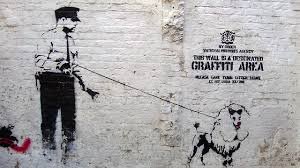SCRAWL: An Artist Statement
Graffiti is as old as human civilization itself. From the ancient caves of Lascaux to the laboriously etched inscriptions inside the pyramids of Egypt, from the defiant scrawls of Roman citizens on city walls to the towering murals of Latin America, the impulse to leave a mark has remained an indelible part of human culture. It is an act of rebellion, communication, and storytelling—sometimes personal, sometimes political, but always deeply human.
SCRAWL is an exploration of this universal human instinct, a global installation and archive that transforms the most overlooked and transient of canvases—the public bathroom stall—into a space for raw, unfiltered human expression. By installing identical aluminum bathroom stalls in public spaces across different cities worldwide, this project invites people to leave their marks, their thoughts, their frustrations, their humor, their protest, their poetry. Over time, these installations will capture the unique linguistic, cultural, and social expressions of each region, forming a living document of human experience that reflects the contrasts and commonalities across societies.
The project will culminate in a traveling exhibition, showcasing these collected stalls as artifacts of our time—physical remnants of the momentary, made permanent. Through SCRAWL, we challenge the notion that graffiti is destruction. Instead, it is creation; it is survival; it is history unfolding in real time.
Objective & Overview
SCRAWL is both an art installation and a sociological experiment. It seeks to examine the ways graffiti transforms spaces and how public expression shifts across geographical and cultural boundaries. The project will install individual, freestanding aluminum bathroom stalls in various cities—some in public squares, some in transit hubs, some in unexpected urban voids. Participants are free to write, draw, scratch, and mark these stalls as they would any public bathroom. The only rule is that nothing will be erased.
Over a set period, the stalls will be collected, preserved, and transported to a central location where they will become part of a traveling exhibition. The exhibition will juxtapose these urban artifacts, inviting viewers to analyze how language, humor, anger, protest, and identity manifest differently (or similarly) in different parts of the world.
Why This Project Matters
Graffiti has long been framed as vandalism, a symptom of social decay, an act of defiance against order. But what if we reconsider it as something deeper—a fundamental, almost primal need to assert existence? In an era of increasing surveillance, erasure, and digital impermanence, graffiti remains one of the last raw, unfiltered forms of communication that cannot be deleted with the press of a button.
SCRAWL asks:
What do people choose to say when given an anonymous space to express themselves?
How do the messages of a subway stall in New York differ from those in a market square in Marrakech or a train station in Tokyo?
Can a project like this reveal the unspoken tensions, fears, joys, and desires of different societies?
This project challenges the viewer to see graffiti not as urban decay but as a continuation of humanity’s oldest tradition—the need to be seen, to be heard, and to leave something behind. Because long after civilizations fall, long after monuments crumble, the scrawled words of the anonymous will remain, whispering stories of who we were



